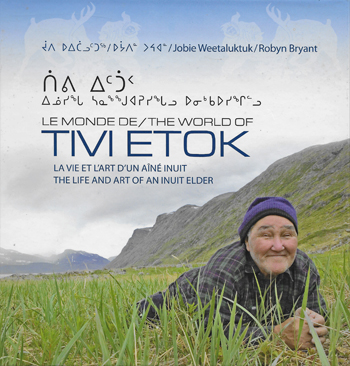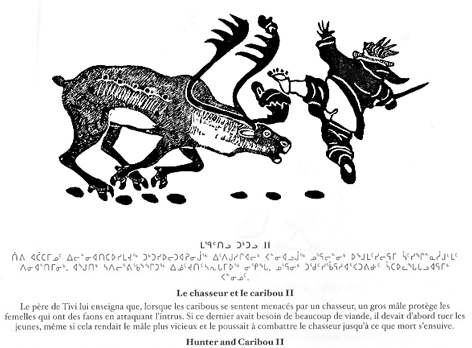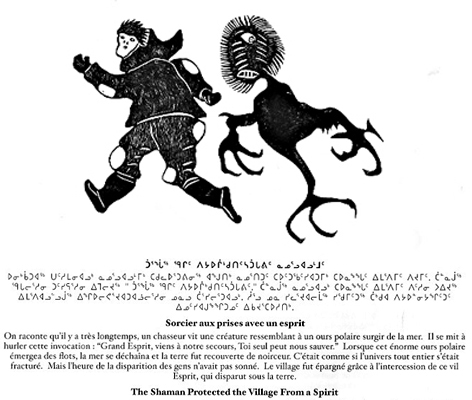From the Editor: Of Sledge Dogs and Bulldogs
The Qimuksiq Network
A Hunt for the Greenlandic Sled Dog’s Soul
The Arctic Nomads Post-Symposium Report
Bulldog with a Short Snout
Book Review: The World of Tivi Etok
IMHO: Staying the Path
Navigating This Site
Index of articles by subject
Index of back issues by volume number
Search The Fan Hitch
Articles to download and print
Ordering Ken MacRury's Thesis
Our comprehensive list of resources
Defining the Inuit Dog
Talk to The Fan Hitch
The Fan Hitch home page
Editor: Sue Hamilton
Webmaster: Mark Hamilton
The Fan Hitch, Journal
of the Inuit Sled Dog, is published four
times a year. It is available at no cost
online at: https://thefanhitch.org.
The Fan Hitch welcomes your letters, stories, comments and suggestions. The editorial staff reserves the right to edit submissions used for publication.
Contents of The Fan Hitch are protected by international copyright laws. No photo, drawing or text may be reproduced in any form without written consent. Webmasters please note: written consent is necessary before linking this site to yours! Please forward requests to Sue Hamilton, 55 Town Line Rd., Harwinton, Connecticut 06791, USA or mail@thefanhitch.org.
This site is dedicated to the Inuit Dog as well as related Inuit culture and traditions. It is also home to The Fan Hitch, Journal of the Inuit Sled Dog.
The Fan Hitch welcomes your letters, stories, comments and suggestions. The editorial staff reserves the right to edit submissions used for publication.
Contents of The Fan Hitch are protected by international copyright laws. No photo, drawing or text may be reproduced in any form without written consent. Webmasters please note: written consent is necessary before linking this site to yours! Please forward requests to Sue Hamilton, 55 Town Line Rd., Harwinton, Connecticut 06791, USA or mail@thefanhitch.org.
This site is dedicated to the Inuit Dog as well as related Inuit culture and traditions. It is also home to The Fan Hitch, Journal of the Inuit Sled Dog.
Book Review....

photo: Robert Fréchette
The World of Tivi Etok:
The Life and Art of an Inuit Elder from Kangiqsualujjuaq, Nunavik
reviewed by Sue Hamilton
Tivi Etok (Ittuk) was born on the land in 1929 when the region was known as Northern Quebec (now Nunavik, Canada). In his own words and expressed in his remarkable artistry, this book reveals his wisdom and a view of Etok’s world gained through his life experiences. Readers get to know what Inuit nomadic existence was like before settlement into hamlets.
Etok speaks about growing up in a traditional camp away from the realm of non-Inuit. He explains how he learned to hunt as a child and to follow the rituals celebrating his first successes. He goes on to describe sickness, starvation, death, meeting qallunait (white men), difficult travel by dog team, smart dogs and stupid dogs, apprehension of moving into the settlement of Kangiqsualujjuaq, wrestling with the concept of kids being sent away from their parents to attend school.
Readers learn of the changes Etok experienced over time, participating in the development of the co-op system while being a full time hunter and, of course, development of his renown artistic skills, his magnificent drawings and stone cut prints. Etok is also forthright about the dark period in his life when he gave in to alcohol, describing its crippling effects and then his successful emergence out of its grasp.
The World of Tivi Etok is written in three languages: Inuttitut syllabics, French and English, each in its own section. But appearing from cover to cover is a generous collection of archival and recent photographs of people and landscapes and many of Etok’s beautiful artistic creativity, all captioned in three languages. His skilled and imaginative stone cuts and drawings and their interpretations are at the heart of what Tivi Etok is all about. They represent examples of activities he and his family experienced as well as his view of the spiritual world of legends and the supernatural which held much significance for him, windows into a very rich, story-telling culture.
 Tivi’s father taught him that when hunting caribou, a great bull caribou would protect the females with young by attacking the hunter. If the hunter required much meat, he was to kill the young caribou first, even though this could mean that the bull would become vicious and fight the hunter to his death. Stonecut; 21-3/8 x 29-3/8; 1975, #4 |
 It was said that
in ancient times, a creature resembling a
polar bear rose from the sea. A hunter saw
it, and ran to his village shouting: “Oh
Great Spirits help us.” The seas crashed
onto the shore as the great creature
emerged, and the land was covered in
darkness. But the time for the destruction
of the people had not come, and the land
opened under the Thing, and it was
gone.
Stonecut; 21-3/8 x 29-3/8; 1979, #9 |
Click for this book's Table of Contents.
The World of Tivi Etok: The Life and Art of an Inuit Elder from Kangiqsualujjuaq, Nunavik (in his own words as told to Molly Emudluk and Jobie Weetalutuk), 978-2-89544-099-4, 2008, is 210 pages long; 8.25 inches x 8.5 inches in hard cover; with a map, sixty-one archival and twenty-four modern photographs and twenty-eight examples of Tivi Etok’s artistry, some in color. Currently out of stock at Publications Nunavik (Avataq Cultural Institute), but found for sale at GoodMinds.com, Abe Books.co.uk, AbeBooks.com. This book may be difficult to come by, but it sure would be worth the effort to own one.